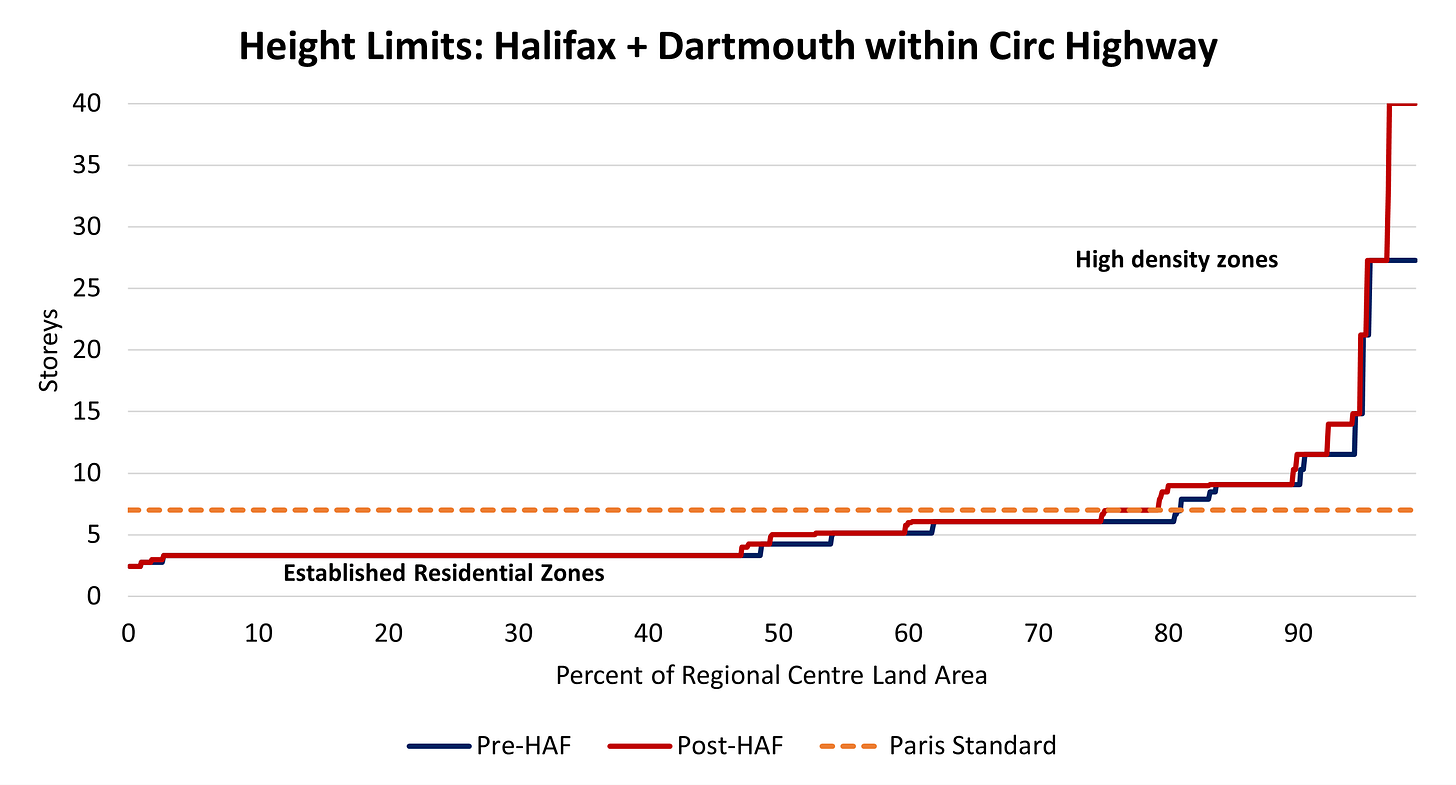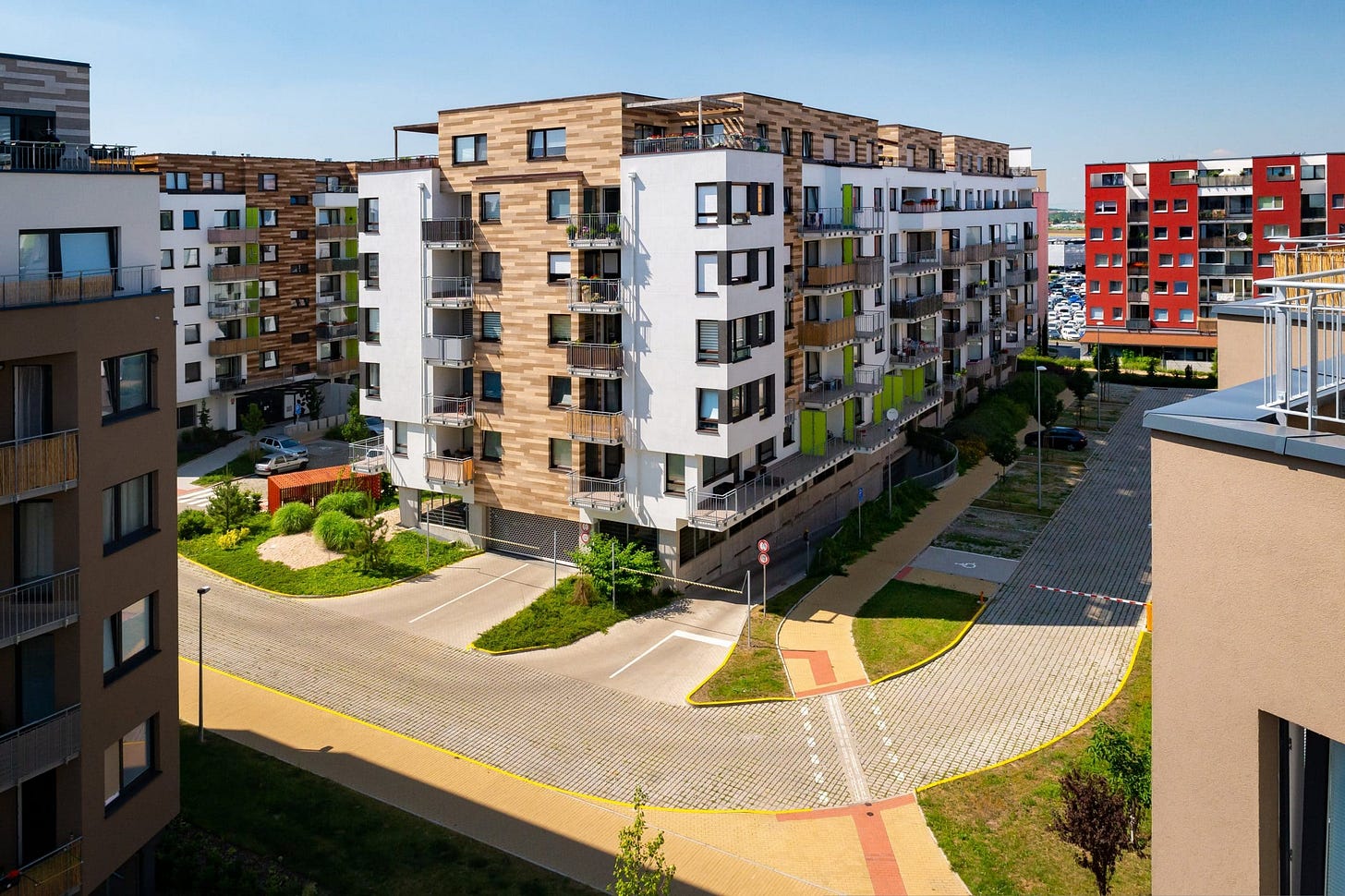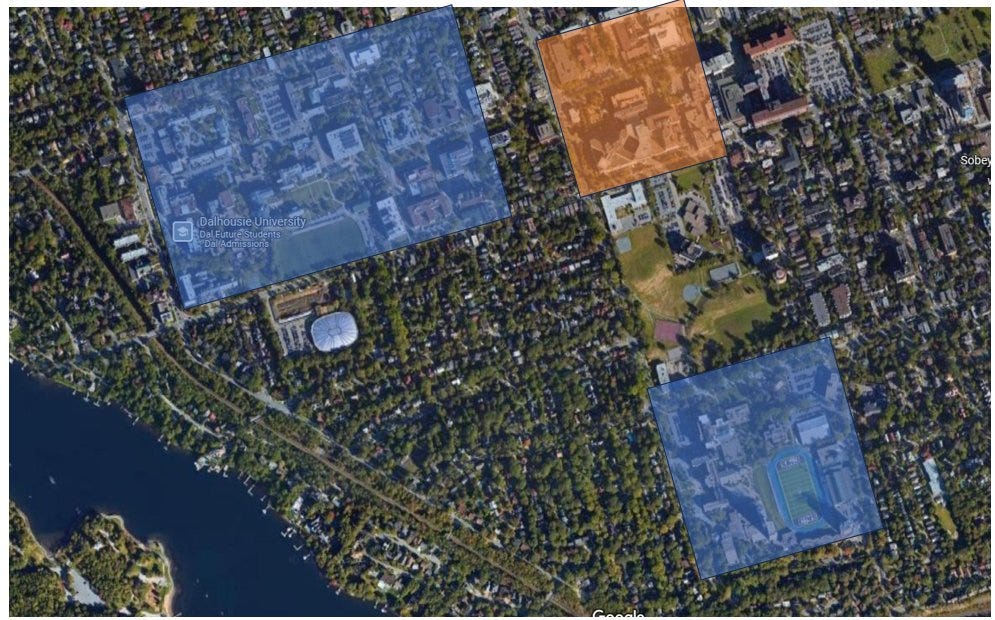I’m a big fan of Halifax’s recent housing reforms as part of the federal Housing Accelerator Fund (HAF) process. The package of reforms set a new “base” housing zone that accommodates four units as of right (and up to 8 units depending on lot size in the Regional Centre - the Halifax peninsula and Dartmouth within the Circ highway), along with targeted increases in density in other areas.
I’ve finally gotten around to looking at how these reforms have affected the maximum building heights in the regional centre. Take this with a grain of salt, because building height restrictions are just one of many barriers to building more housing, but they matter. Lots of the lower-profile HAF reforms, like removing parking restrictions and increasing how much of the lot you can build on, matter a lot as well and won’t be captured here.
Caveats aside, here’s how the HAF changed building height limits in the regional centre:
If it looks mostly the same to you, you’re right. What stands out to me:
No increases to Established Residential. To be fair, there was a “pitched roof“ clause added that would give ER-3 another storey, but the height limit on Halifax’s main zone in its core has not changed.
Larger increases in high density. This caught more attention during HAF, but a lot of the increases in allowed density were places where significant density was already allowed.
In total, the post HAF red line is about 10% higher than the pre-HAF blue line. If you think of housing policy as setting a box - the HAF reforms were better at allowing more splitting of the box (more units) than building a bigger box, especially at the lower end, in established neighborhoods where housing is scarce. I’m still decently confident that allowing more units in ER-3 zones, paired with higher lot coverage and less parking needs will deliver more homes. But it brings me back to an old question.
Why can’t we be like Paris?
I’ve covered this one before, simplest answer is we don’t allow it. The majority of residential land is restricted so tightly at 3 storeys or less, that the remaining land needs to be much higher density to compensate. The result is a very rigid homebuilding industry, where most units come from projects that take years and years to build, while needing specialized labour and equipment that can increase costs. Meanwhile, there’s a lot of potential for replacing single family homes into multiplexes, but it is still a relative unknown.
What’s missing in this “barbell strategy” are more areas where low density zoning is shifted into mid-rise density. One big perk of mid-rise housing is that it can be built “5 over 1” style. That means you build a concrete ground floor, but every floor above that is built from lumber. Canada, unlike France, has lots of lumber that could be used to build more of this kind of housing, and likely faster and cheaper than our current towers.
During the HAF reforms, councilor Waye Mason noted that many of the changes during HAF pushed the few midrise zones out of the timber range by allowing up to 7-9 storeys (which suggests concrete towers). Unless mass timber takes off, we’re still going to rely on concrete towers and gentle density.
For Halifax, my answer to “where” this mid-rise housing should go is pretty straight forward… the South End! It does not make sense to keep the land next to our two largest universities, and our main healthcare complex overwhelmingly as low density housing. “Containment” of the universities is a mistake, and one that’s far outlasted the reality where students are forced to fight over the few homes available.
Prime land like the South End should not be reserved to elites like doctors and academics, but should provide more housing to the students and nurses who make the whole thing run. As it stands, there are far too many people driving into the peninsula who could be living on it.
During the HAF reforms, the initial proposal from staff included an upzoning of about a blocks-worth of land around Dal and SMU, but backed down after pushback. But we’ve since had two elections (municipally and provincially) where housing was a top issue. I’ve not seen any moves on housing from either level since the elections.
It’s not that these changes need to happen now. But politically, with fresh mandates in hand, if you want to see the benefits of upzoning before the next election, you’d need to do it now.








Great article. The South End issue sounds like a tough nut to crack. Great point about parking minimums.; parking mandates are one amongst several details in zoning that quietly hide in the subtext and limit growth.